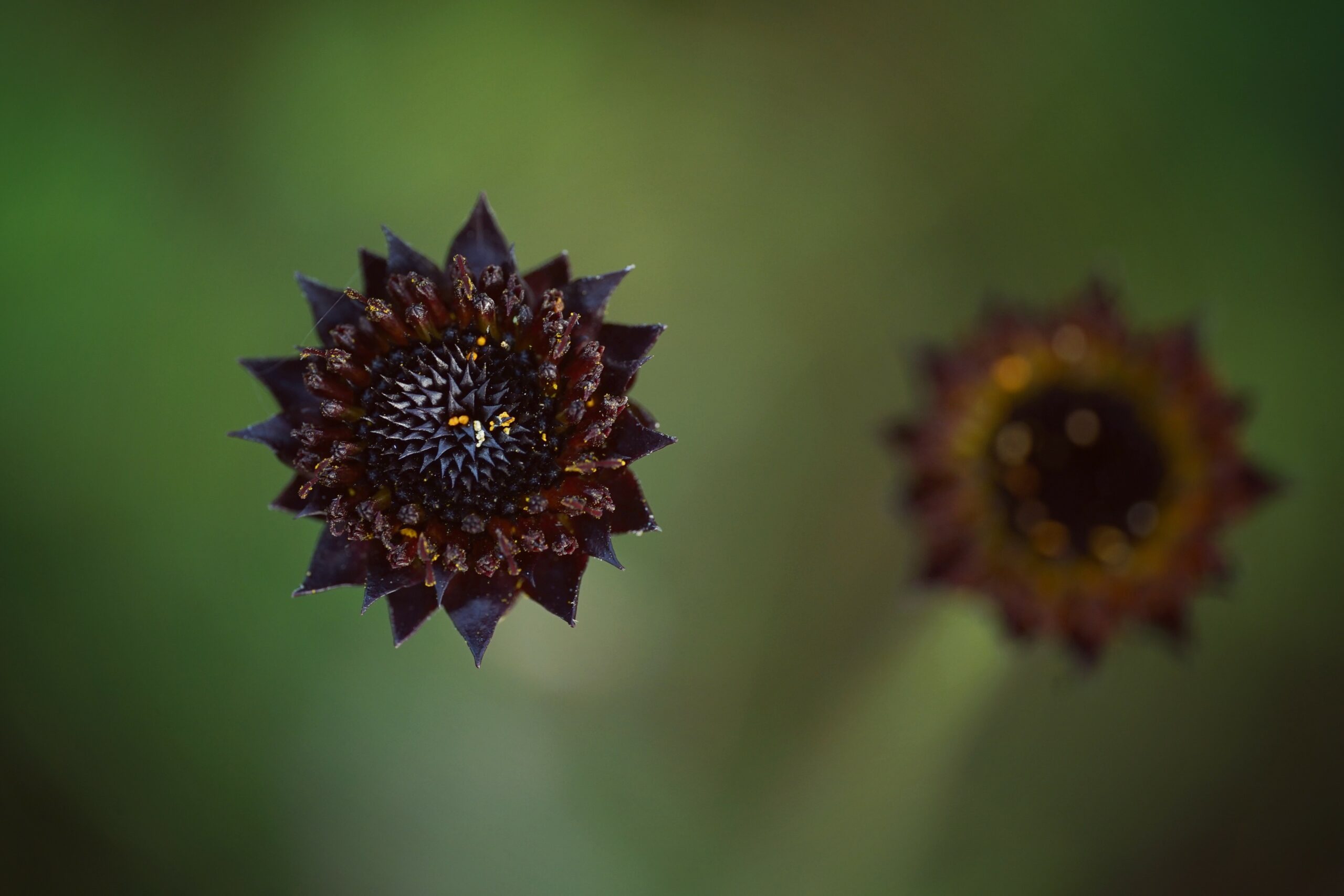5 Spooky Florida Wildflowers
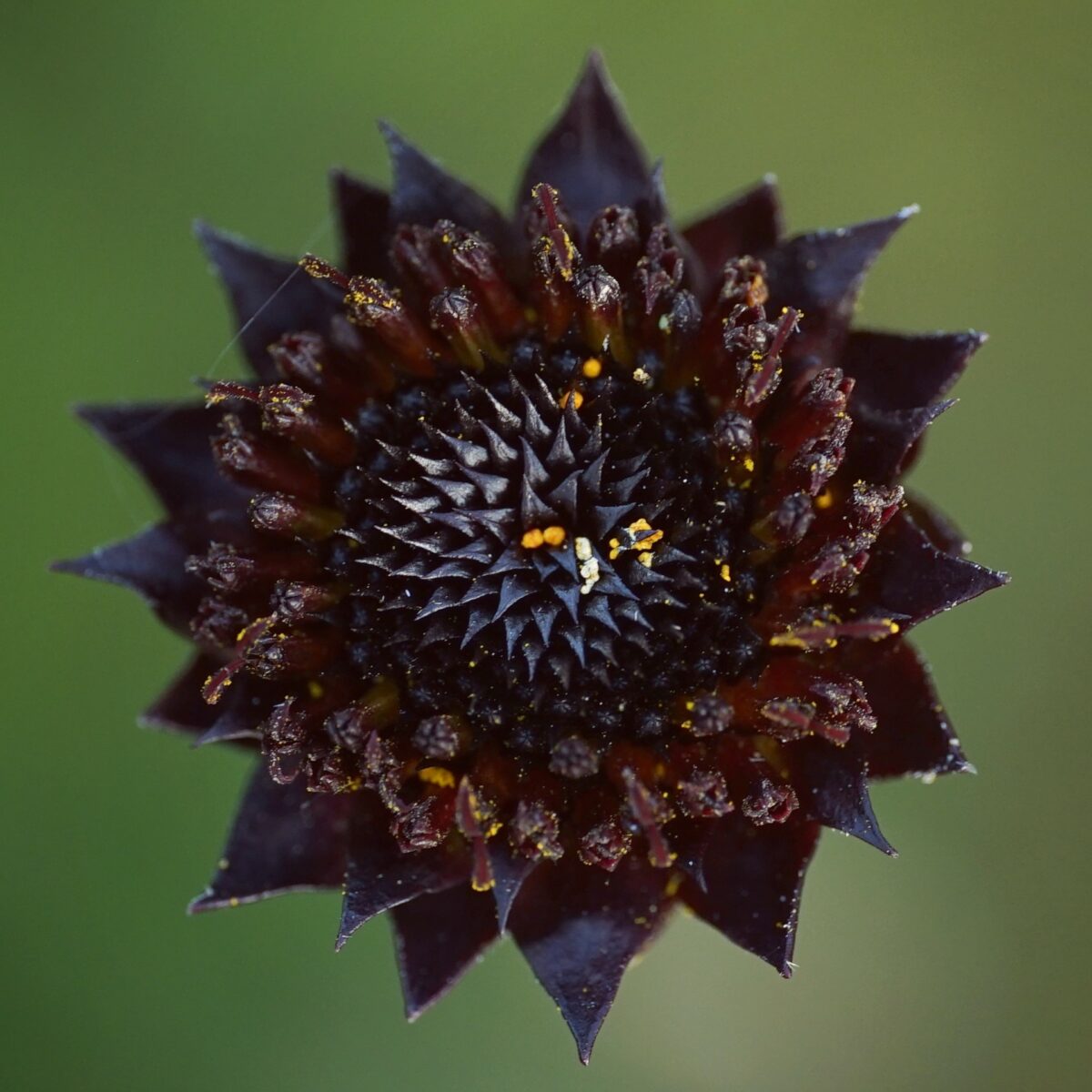
Meet the sunflower that rejects the stereotypical sunny disposition and embraces darkness. From a distance, stands of Rayless sunflower (Helianthus radula) may appear as the lifeless shells of past flowers – but take a closer look and you will find a steady hum of bees and butterflies enjoying the pollen-rich and beautifully intricate blooms.
Learn more about Rayless sunflowers
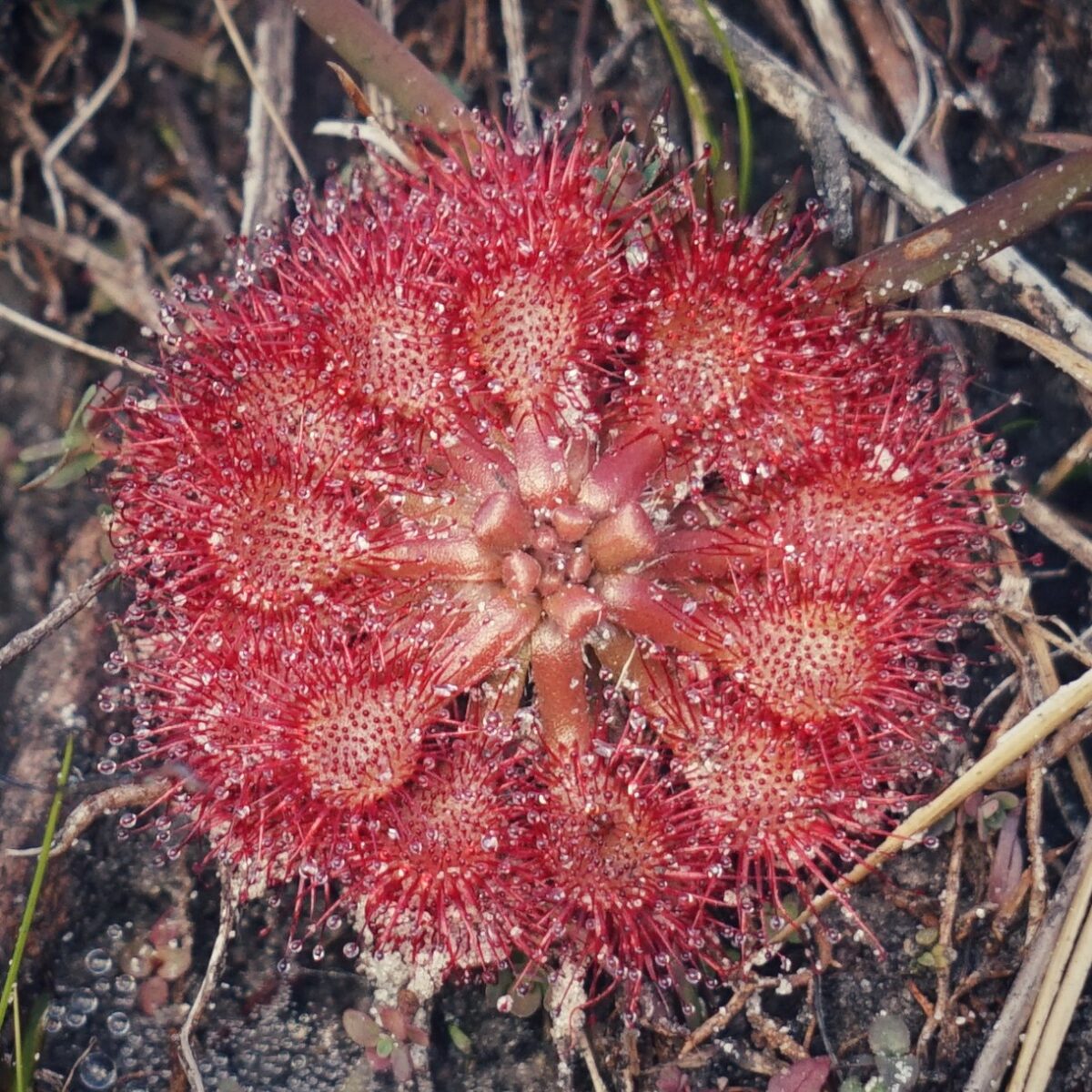
Straight out of the little shop of horrors, Sundews (Drosera sp.) are the tiny terrors of insects in bogs and wet savannahs. Their leaf blades are covered in tentacle-like glands that secrete a sticky, acidic substance in which insects become trapped. The leaves then fold in on themselves, ensnaring the insects until digestion is complete.
Learn more about Pink sundew
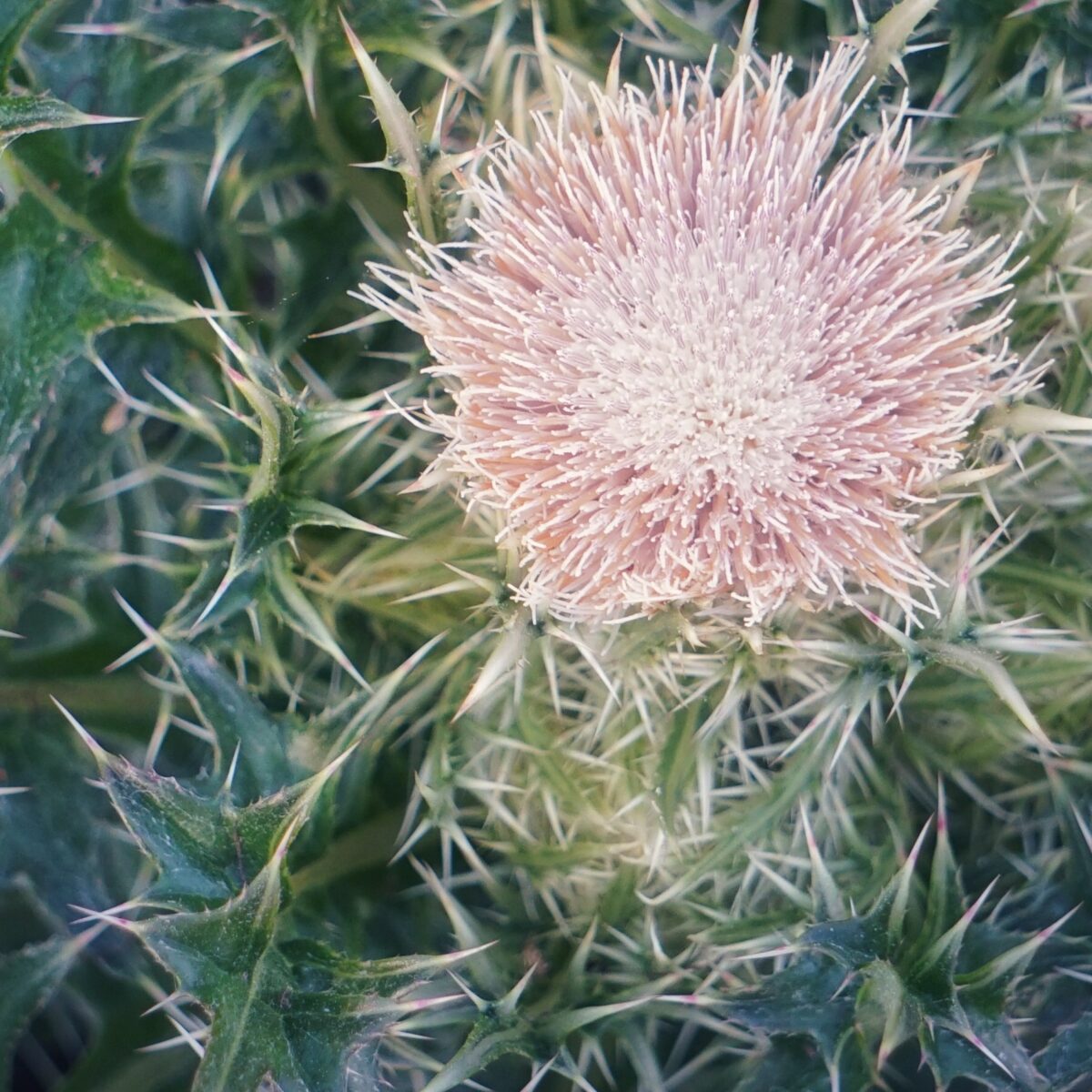
Purple thistle (Cirsium horridulum) is a classic case of a sweet interior hidden behind a terrifying suite of armor. All parts of this plant are covered in sharp spines, but despite the thorny personality, it welcomes a variety of pollinators as a favorite nectar source and host plant.
Learn more about Purple thistle
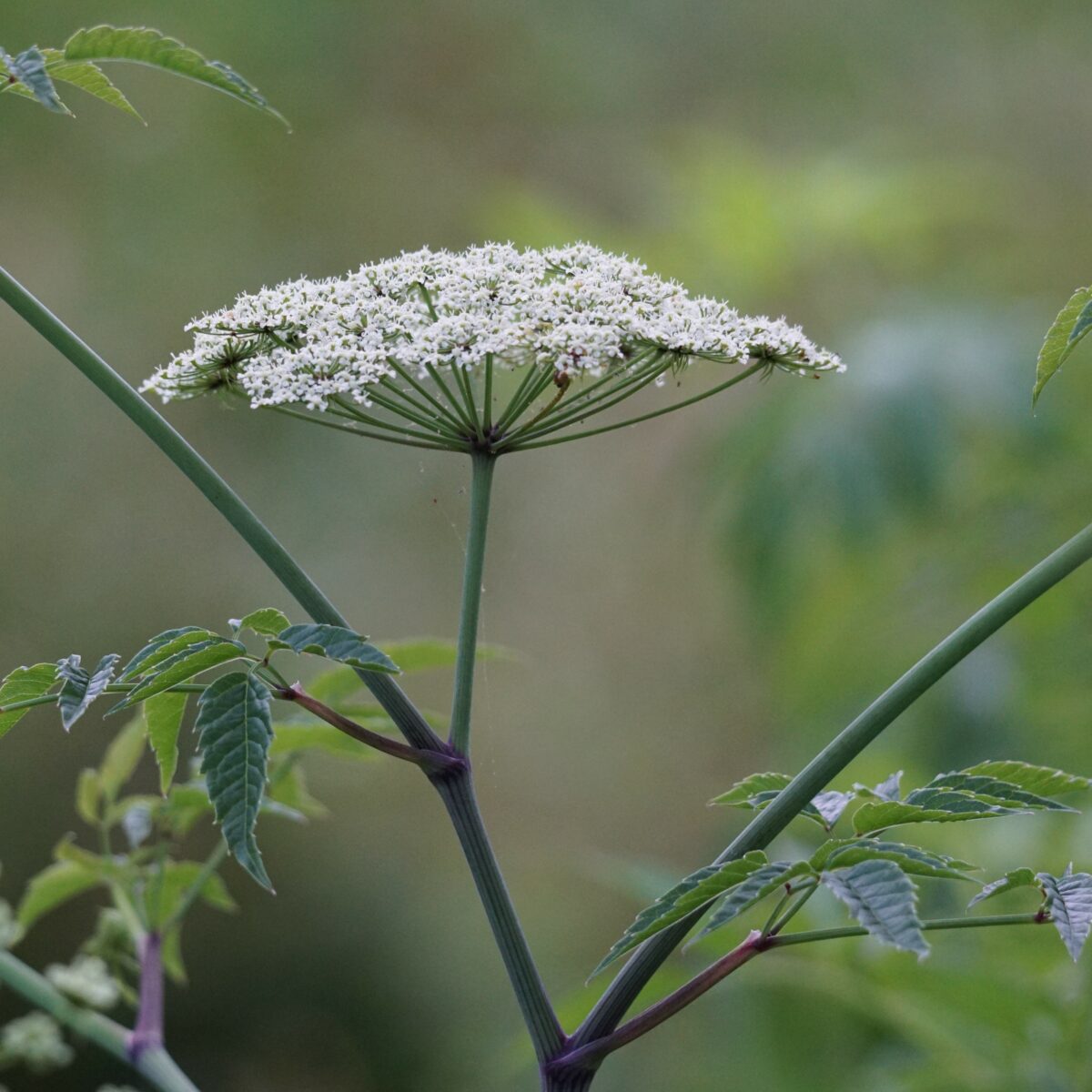
A deadly beauty, Spotted water hemlock (Cicuta maculata) is one of the most toxic plants known. It contains cicutoxin, a poisonous compound that can fatally disrupt the central nervous system. There is however one creature immune to its deadly properties: the Black swallowtail caterpillar, for which it serves as the larval host.
Learn more about Spotted water hemlock
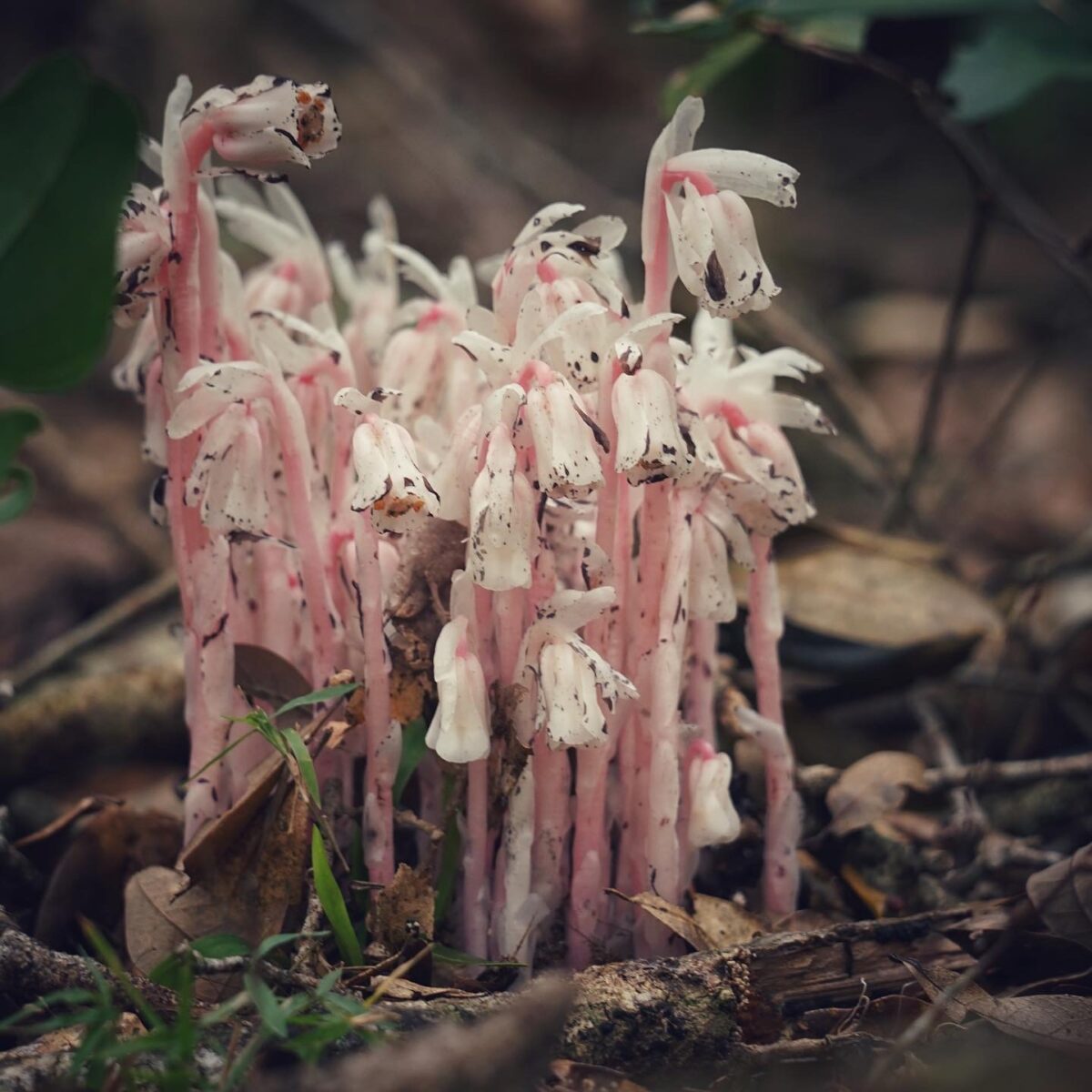
Indianpipe (Monotropa uniflora) is a ghostly sight that emerges from the ground right around Halloween! This non-photosynthetic wildflower lacks chlorophyll, creating its white and translucent appearance. Nestled among the leaf litter and lichens on the forest floor, it relies on underground mycorrhizal fungi for its nutrients.
Learn more about Indianpipe

